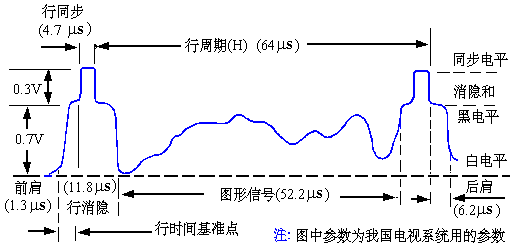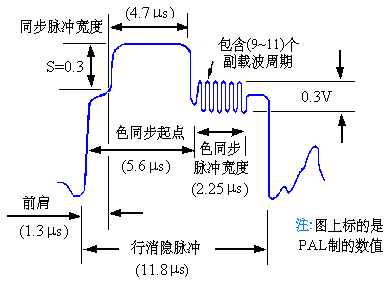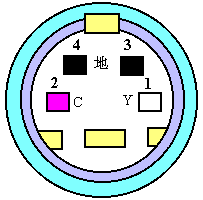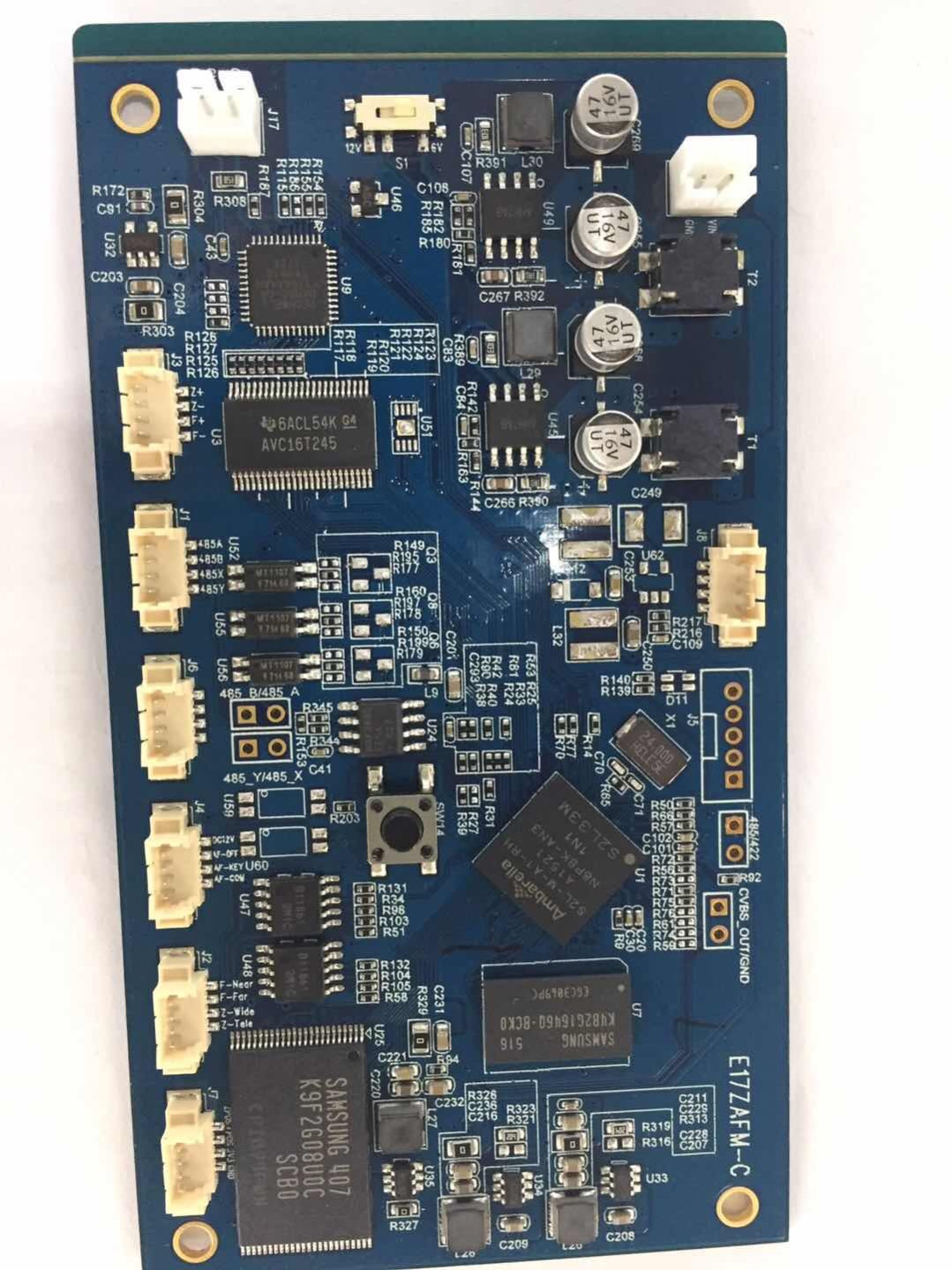Composite television signal A single signal containing a luminance signal, a color difference signal, and all timing signals is called a composite video signal, or a full TV signal. Figure 07-03-6 shows a black and white full TV signal, and the color difference signal is obtained by mixing with the luminance signal after color subcarrier modulation, as shown in Figure 07-03-7. Figure 07-03-6 A line cycle of black and white full TV signal Figure 07-03-7 Horizontal blanking interval of color TV system (3) Component TV signals Component video signal (component video signal) refers to each primary color component as an independent television signal. Each primary color can be expressed either in RGB or in brightness-color difference, such as YIQ, YUV. Using component TV signals is the best way to express color, but it requires a relatively wide bandwidth and synchronization signal. (4) S-Video signal Separate TV signal S-Video (Separated video-VHS) is a TV signal with separated brightness and color difference, and is a compromise between component analog TV signal and composite analog TV signal. There are two advantages to using S-Video: â‘ Reduce the cross interference between the luminance signal and the color difference signal. â‘¡ It is not necessary to use a comb filter to separate the luminance signal and the color difference signal, which can increase the bandwidth of the luminance signal. The composite TV signal is to combine the luminance signal and the color difference signal together, and use a signal cable to transmit. The S-Video signal uses two separate signal cables, one for the brightness signal and the other for the color difference signal. These two signals are called Y / C signals. S-Video uses a 4-pin connector, as shown in Figure 07-03-8. The specific specifications are shown in Table 07-03-3. Figure 07-03-8 S-Video connector Table 07-03-3 S-Video industry standard 4-pin connector specifications Socket number signal Signal level impedance 1 Ground (brightness) - - 2 Ground (chroma) - - 3 Brightness (including sync signal) 1V 75 ohms 4 Chroma 0.3V 75 ohms It should be noted that please do not confuse S-Video with S-VHS (Super Video Home System), S-VHS is a high-end home video system. S-Video is a hardware standard that defines signal cable connection sockets. S-VHS or SVHS is a signal standard for reinforced VHS TV video tapes. The resolution provided is higher than the resolution provided by VHS, and the noise signal is lower. . S-VHS supports separate luminance and chrominance signal input / output, eliminating the composite-separation process of luminance and color.
Printed Circuit Board assembly sometimes called PCB Assembly(PCBA).
PCB Assembly PCB Assembly,PCB Circuit Board ,Electronic PCB Assembly,Professional PCB Assembly Orilind Limited Company , https://www.orilind.com


The bare board is populated with Electronic Components to form a functional. In through-hole technology, the component leads are inserted in holes surrounded by conductive pads; the holes keep the components in place. In surface-mount technology (SMT), the component is placed on the PCB so that the pins line up with the conductive pads or lands on the surfaces of the PCB; solder paste, which was previously applied to the pads, holds the components in place temporarily; if surface-mount components are applied to both sides of the board, the bottom-side components are glued to the board. In both through hole and Surface Mount, the components are then soldered; once cooled and solidified, the solder holds the components in place permanently and electrically connects them to the board.
